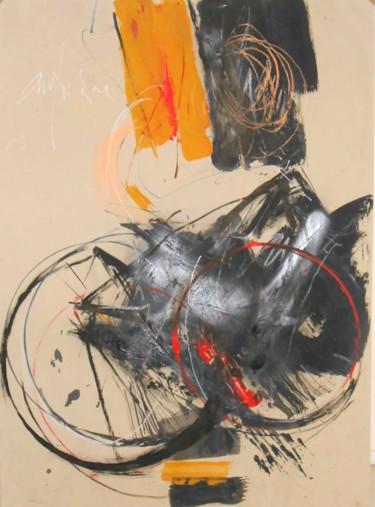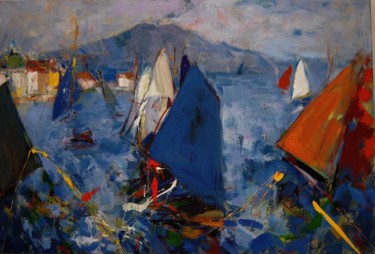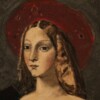Armando Farina
Armando Farina est né à Salerne en 1928, non loin de la côte amalfitaine et a commencé à peindre dans le sillage de l'école Posillipo, en suivant le chemin tracé par le Néerlandais Pitloo, Giacinto Gigante et les frères Palizzi.
En 1949, il termine ses études commencées avec Della Rocca à Cava dei Tirreni et en 1956 il s'installe à Turin où il entre en contact avec de nouvelles cultures, Milan, Paris, Barcelone, Picasso et les nouvelles tendances de l'art contemporain.
De l'impressionnisme en plein air au post-impressionnisme du fauve, en passant par les expériences de l'art abstrait et de l'art informel.
Participe à de nombreuses expositions nationales et étrangères, primées à plusieurs reprises. Ses œuvres sont présentes dans de nombreuses collections italiennes et étrangères (États-Unis, Canada, Australie, Allemagne, Suisse, France).
Il est le fondateur et président de l'Académie internationale Sainte-Rita. Sa peinture évolue au sein d'intuitions suggestives de renouveau esthétique, dans une recherche personnelle continue et sensible, ses thèmes s'étendent sur des domaines de valeurs diverses : espace, vie, nature, mysticisme. Toujours orienté vers l'effort d'une construction, vigilante, sans excès intimistes et sans aliénations dangereuses.
Dans ses compositions, la couleur pénètre la réalité visuelle, la rend plus épaisse, devenant à la fois réalité et événement.
Farina recourt parfois à différentes solutions utilisant des collages, des bandes de carton coloré, des bandes de masonite, des plaques de plastique, du papier argenté, des assemblages de toiles, le tout soumis à la nécessité d'une peinture qui soit encore couleur.
De cette manière, chaque composition acquiert une tonalité fortement individuelle et devient un motif de méditation pour le spectateur."
Il existe de nombreuses revues auxquelles Armando Farina a participé et les récompenses qui lui ont été attribuées. Pour plus de détails, voir sa bibliographie.
Découvrez les œuvres d'art contemporain de Armando Farina, parcourez les œuvres d'art récentes et achetez en ligne. Catégories: artistes contemporains italiens. Domaines artistiques: Peinture. Type de compte: Artiste , membre depuis 2017 (Pays d'origine Italie). Achetez les dernières œuvres de Armando Farina sur ArtMajeur: Découvrez de superbes œuvres par l'artiste contemporain Armando Farina. Parcourez ses œuvres d'art, achetez des œuvres originales ou des impressions haut de gamme.

Cote artiste, Biographie, Atelier de l'artiste:
Latest Artworks • 10 œuvres
Voir toutReconnaissance
Biographie
Armando Farina est né à Salerne en 1928, non loin de la côte amalfitaine et a commencé à peindre dans le sillage de l'école Posillipo, en suivant le chemin tracé par le Néerlandais Pitloo, Giacinto Gigante et les frères Palizzi.
En 1949, il termine ses études commencées avec Della Rocca à Cava dei Tirreni et en 1956 il s'installe à Turin où il entre en contact avec de nouvelles cultures, Milan, Paris, Barcelone, Picasso et les nouvelles tendances de l'art contemporain.
De l'impressionnisme en plein air au post-impressionnisme du fauve, en passant par les expériences de l'art abstrait et de l'art informel.
Participe à de nombreuses expositions nationales et étrangères, primées à plusieurs reprises. Ses œuvres sont présentes dans de nombreuses collections italiennes et étrangères (États-Unis, Canada, Australie, Allemagne, Suisse, France).
Il est le fondateur et président de l'Académie internationale Sainte-Rita. Sa peinture évolue au sein d'intuitions suggestives de renouveau esthétique, dans une recherche personnelle continue et sensible, ses thèmes s'étendent sur des domaines de valeurs diverses : espace, vie, nature, mysticisme. Toujours orienté vers l'effort d'une construction, vigilante, sans excès intimistes et sans aliénations dangereuses.
Dans ses compositions, la couleur pénètre la réalité visuelle, la rend plus épaisse, devenant à la fois réalité et événement.
Farina recourt parfois à différentes solutions utilisant des collages, des bandes de carton coloré, des bandes de masonite, des plaques de plastique, du papier argenté, des assemblages de toiles, le tout soumis à la nécessité d'une peinture qui soit encore couleur.
De cette manière, chaque composition acquiert une tonalité fortement individuelle et devient un motif de méditation pour le spectateur."
Il existe de nombreuses revues auxquelles Armando Farina a participé et les récompenses qui lui ont été attribuées. Pour plus de détails, voir sa bibliographie.
-
Nationalité:
ITALIE

- Date de naissance : 1928
- Domaines artistiques:
- Groupes: Artistes Contemporains Italiens
Evénements artistiques en cours et à venir
Influences
Formation
Cote de l'artiste certifiée
Accomplissements
Activité sur ArtMajeur
Dernières Nouvelles
Toutes les dernières nouvelles de l'artiste contemporain Armando Farina
English Biography
Armando Farina was born in 1928 in Salerno, Southern Italy.
Throughout the hardships and daily struggles of the Second World War the young Farina strove to complete his studies and gain his art diploma. After his graduation he gained entry to the “Della Rocca group” (headed by the great painter from the Neapolitan school), where he studied artists such as Cammarano, Morelli and Gigante.
In 1950, Farina moved to Turin, where he achieved tremendous acclaim and success winning the first National prize in Sulmona, Milan, Rome and Portofino. His career was further boosted with the “Ars et Labor”, where he showed alongside Mattia, Gilardi and Prada. This was followed by shows in the Gissi gallery in Turin and the Annunziata gallery in Milan in 1960. where he started to take an interest in the more informal style of painting which was the current trend without giving up his experiences of unimpressionism.
It was also then that he founded “Ars3”, a collective of artists including Ferrante, Molino and Simonetti.
1970 saw him become a teacher of art at “l’Accademia int. le S.Rita”, of which he was a founder, and where he taught important Turin artists such as Coppola, Viarengo, Miniotti, Ferrara and Albertone. In 1972 Farina assumed a different approach and his work became more personalised with signs and symbols reproduced within the enchanting colours of his palette. He also achieved national recognition with his work being shown all over Italy in galleries like the Giulio Cesare gallery in Rimini, and Galleria La Seggiola in Salerno, while attracting plaudits from gallery directors and critics alike, in particular, Bottino, Carlucci, Dragone, Oberti, IL compianto Spinardi, the artists of Calabria, Guttuso, Migneco, Jorn, Alecinsky and Copora.
In the early 80’s, Farina’s career and personal life was overcome by tragedy with the death of his wife Maria Rosaria. He gave up his unimpressionist style and started on a difficult artistic journey where he experimented with avante garde, informal “pop art”.
His whole lifestyle and approach to his work changed and he became more spiritual and devoted himself to the Catholic Church.
This period of evolution within his work did not altogether agree however with the galleries and art circles that he had previously been involved with, in particular, galleries in Turin, Milan, Rome, Naples and Bologna, who didn’t appreciate his artistic desires and refused to accept his new line of work. 1989 however, was full of promise, with two large personal exhibitions in Madrid and Barcelona, a public commission and the publication of a monograph, but then tragedy struck again, this time with the death of his daughter Flavia.
Ultimately, this period of tragedy and transformation resulted with the majority of work produced, remaining in the possession of Armando or his school l’Accademia S.Rita, with the only exceptions being his major public commissions, like the murals produced for: “Sindone ’89” in Rome. “The Angel of Turin”, a 4m x 10m work for the Sacred Museum of Cracovia. “The heart of Jesus” measuring 90cm x 90cm, and on permanent display in the Vatican Pinacoteca. “Stabat Mater “, a 1m square piece, within the Sanctuary of Pompeii, and several restorations carried out on various Frescoes in churches and castles around Turin and Piemonte.
Armando was understandably at an all time low after the untimely death of his daughter, and what he saw as a lack of appreciation for his experimental style of painting. He decided to leave Turin, the city he loved, and try to put the tragedies of the last decade behind him by carving out a new life and career in Rome. After settling in with these new surroundings he somehow rekindled the love he had for art, research and study, and set about painting in an invigorated manner, full of enthusiasm and passion, creating some of the finest work of his career. Rejuvenated and full of desire, Armando returned to his beloved home of Turin and restarted his career.
With the help of his son Giuseppe, who handles all his exhibitions and promotions, this incredibly strong willed and determined artist is now back where he belongs amongst the elite of contemporary forward thinking artists who are often copied but never bettered, and thanks to the same burning desire in Giuseppe, his work is in high demand all over Italy and can be seen in private collections around the world. He has a network of galleries who distribute his paintings, who can be found in Rome, Bergamo, Milan, Taormina, Pesaro, Padova, Venice, Paris, Edinburgh, Düsseldorf, Sydney and New York and is regularly shown at art fairs in London, Edinburgh, New York, Cannes and Dublin, among others throughout continental Europe.
Armando Farina still lives and works in Turin.

Avis et commentaires
















